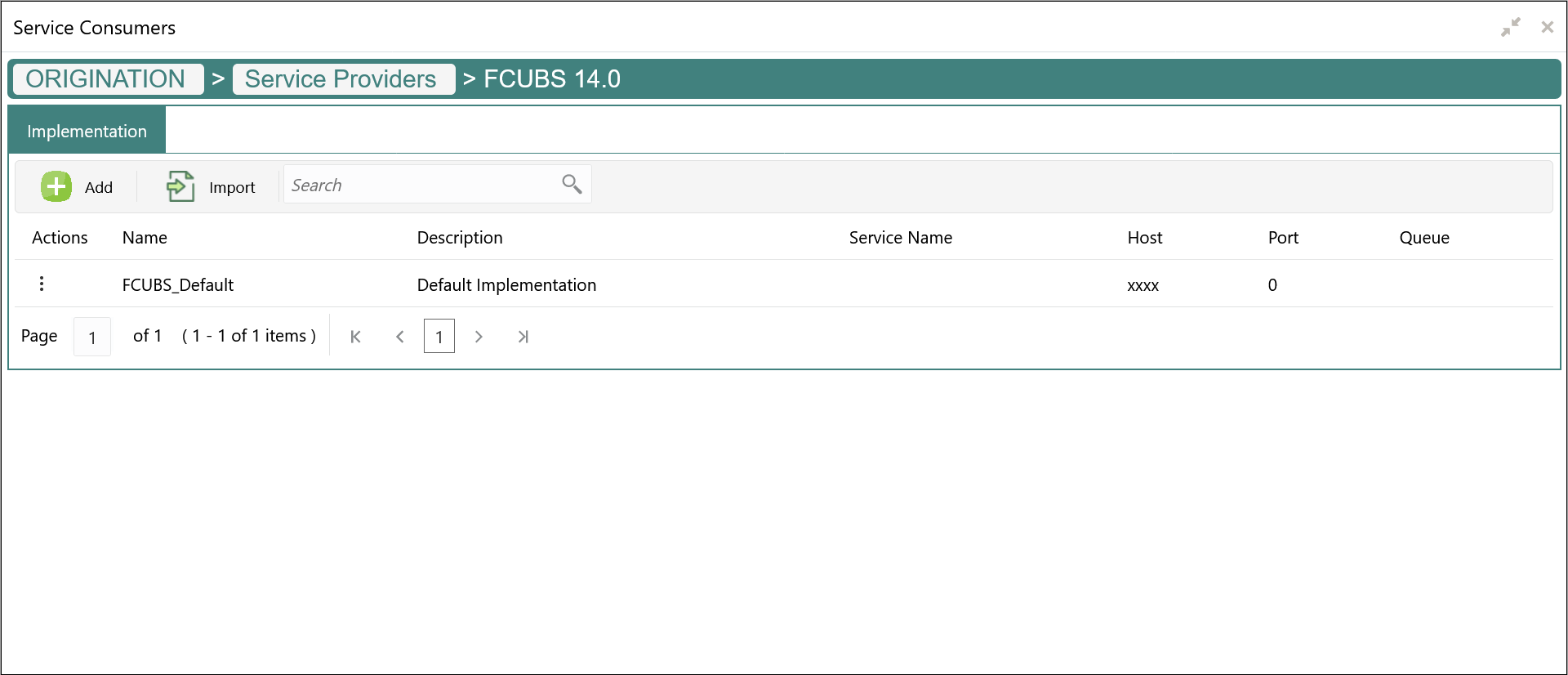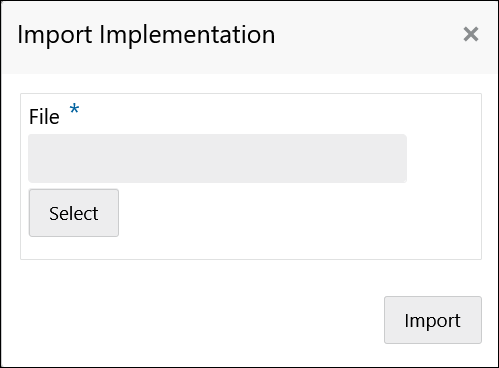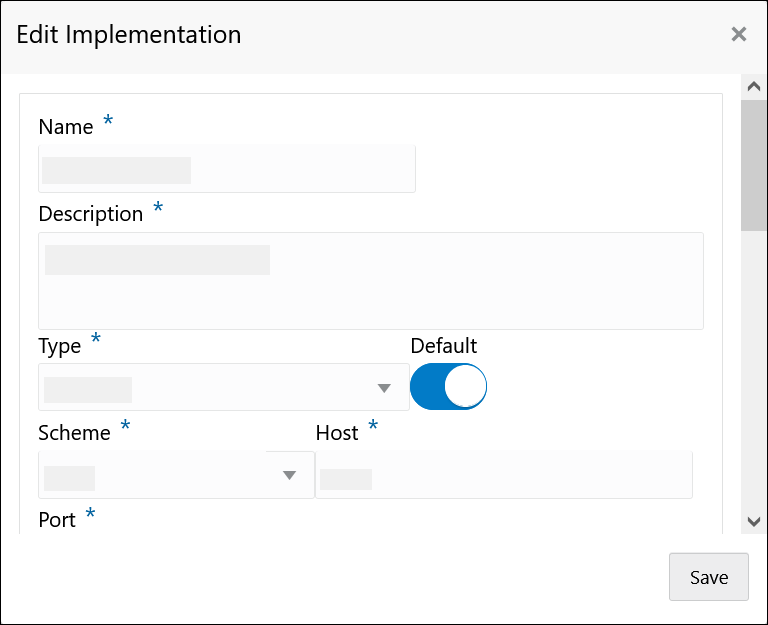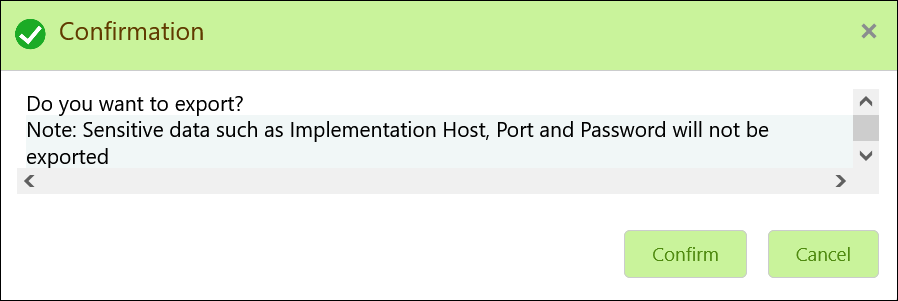5 Implementation
This topic provides the systematic instructions to configure the implementation.
Note:
Default implementation is created whenever a new service provider is added.Add Implementation
The user can create the implementation manually.
Authentication:
If External Product processor require authentication to connect to it, Oracle Banking Routing Hub provides standard authentication mechanism schemes like BASIC, JWT, OAUTH_TOKEN, SSO, OAUTH_TOKEN_OIC.
Note:
In case of no authentication, NONE needs to be set as Authentication Type.
In case of identity propagation, SSO needs to be set as Authentication Type.
In case of OIC integration, OAUTH_TOKEN_OIC needs to be set as Authentication Type
- WSDL:
The Web Services Description Language (WSDL) is an XML-based interface description language that is used for describing the functionality offered by a web service.
Both SSL and non-SSL WSDL URL are supported.
Note:
If there is a change in wsdl file, then same wsdl file need to be imported again to update the provided service information in Routing Hub. - SWAGGER:
Swagger is an Interface Description Language for describing RESTful APIs expressed using JSON.
Currently, Swagger 2.0 & OpenAPI 3.0 both are supported.
Note:
If there is a change in swagger file, then same swagger file need to be imported again in order to update the provided service information in Routing Hub. - OTHERS:
OTHERS option is selected for adding REST API details manually when provider does not have swagger file.
Note:
If there is a change in existing endpoint, then the same endpoint details need to be entered again with the new changes in order to update the existing provided service information in Routing Hub.
Queue
If the Implementation Type is selected as Queue, For QUEUE type, refer to the field description table below.Table 5-2 Add Implementation - Queue - Field Description
| Field | Description |
|---|---|
| Type | Select the type of implementation from drop-down list
The available options are:
DEFAULT type is for REST and SOAP API calls. |
| Default | Select the toggle if the user wants to default. |
| Queue Broker | Select the queue broker from drop-down list.
The available options are:
|
| Request Reply Platform | Select the queue broker from drop-down list.
The available options are:
JMS_MESSAGEID is default request-reply pattern. |
| Connection Factory | Specify the connection factory.
Connection Factory is JNDI based connection factory name which is used to create connection for JMS client. |
| Queue | Specify the queue.
Queue Name is JNDI based destination name. |
| Connection Factory | Specify the connection factory.
Response Connection Factory is needed when destination is going to respond back after processing the request. |
| Queue | Specify the queue.
Response Queue Name is needed when destination is going to respond back after processing the request. |
External product processor might require some standard headers to be passed along with the request. User can specify the headers which are required by service endpoints for its all implementations but not present in swagger file.
Import Implementation
The user can create an implementation by importing the JSON file. The user can also import zip file in order to import all the configuration JSON files together (except parent level configuration JSON files).
View Implementation
The user can view implementation details and can also switch to edit form by clicking on edit icon.
Edit Implementation
The user can modify the implementation details.
Delete Implementation
The user can delete the implementation details.
Export Implementation
The user can export the implementation configuration as JSON file.
Request Audit
Clear Cache
The user can clear the SOAP client cache.









